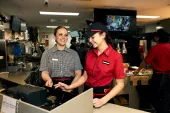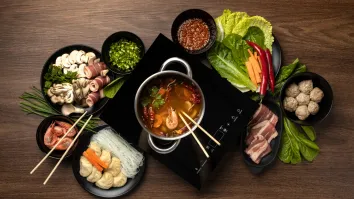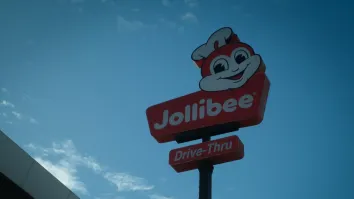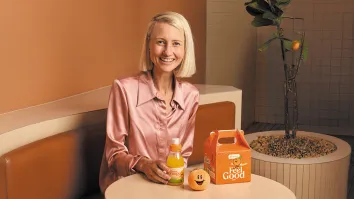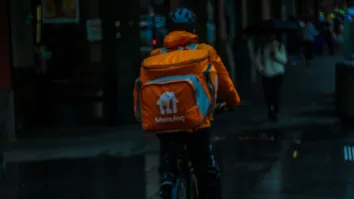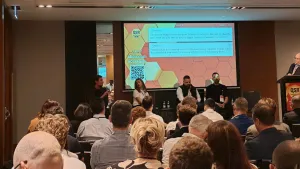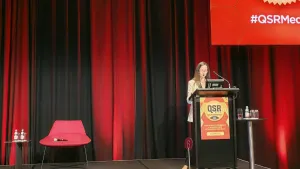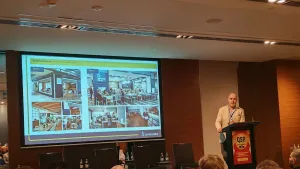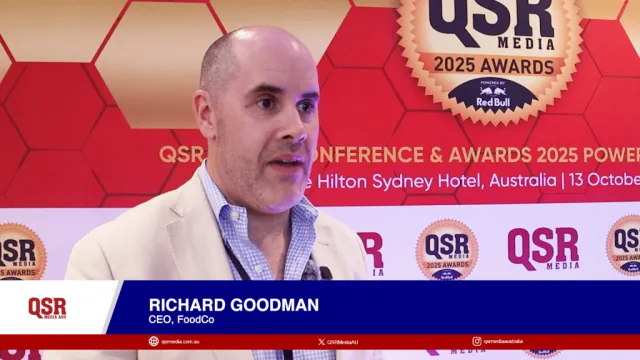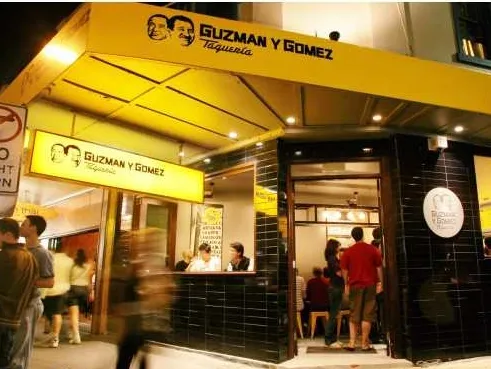
What technology are COO’s investing in?
From million-dollar POS platforms to training systems, see what’s hot right now in operations tech.
Point of Sale Platforms
Pizza Hut, a global QSR looking to expand its store footprint in Australia, revealed a $4 million investment in a new point of sale and back of house platform across is national franchisees.
“This gives us opportunities to simplify the system, real time access to data, and in the longer term better intelligence on both operational and financial metrics,” said Richard Wallis, Operations & IT Director, Pizza Hut. He added that the global pizza brand runs a global online training system that enables “more efficient training delivery, speed to market and content management.”
Enhanced Training Systems
It is not only the big franchises that are seeing the value in operations technology. Even smaller but quickly expanding QSR’s like Guzman y Gomez Mexican Taquería (GYG) are upgrading their training systems in a bid to deliver loyalty-inducing customer service.
“With a lot of new restaurants opening, we are focused on building on our already unique culture, food and service experiences through enhanced training systems and processes,” said Kurt Whitlow, Chief Operating Officer, GYG.
Mr. Whitlow said technology “has allowed us to develop that ‘single source of truth’ in the business -- reducing the time taken to roll out changes into restaurants, reducing administration and increasing engagement with our crews.”
“Hard copies of documents are avoided and everything is either on a tablet in the restaurants or on our learning and communications platform which can be accessed by all staff. We have been able to work closely with our technology partners to tailor systems to meet GYG needs,” Mr. Whitlow added.
Social Media Feedback Systems
Social media systems are also emerging as a lucrative but challenging new feedback alleyway for QSR’s.
Pizza Hut, for example, is now entertaining client comments through Facebook, but admits this has put more pressure on operational staff to deliver quality service, since any unsatisfactory feedback will quickly ripple through customer social networks.
“Now customers access our business through the digital channel and this has fundamentally (and rapidly) changed our role in executive service. Customer service has acquired a whole new meaning with real time feedback coming through on Facebook. You’re as good or bad as the comments on the Facebook page every day. This increases accountability for operations and makes it more visible to other customers,” said Mr. Wallis of Pizza Hut.
“The use of social media and iPhone apps is transforming the way QSRs establish customer engagement levels, communicate with and train their staff, and improve the convenience and ease of ordering food, both in terms of repeat orders as well as providing greater visibility of the process from order to delivery,” agreed Simon Cook, partner and head of the consumer business and transport team for Deloitte, an industry advisory firm.
Customer and Store Analytics
The digital revolution has also unlocked the floodgates of data analysis, with QSRs now able to obtain once-unquantifiable metrics on customer habits and store performance.
“The back-end analytics that the larger QSRs are introducing to inform their tactical pricing and operational activities are gaining greater impact as the technology becomes more robust and ‘real time,’” said Mr. Cook of Deloitte.
Pizza Hut, as an example, maintains “sophisticated CRM systems” and a database which allows them to glean “deeper insights on how we can drive sales, retain customers and build dayparts effectively, said Mr. Wallis of Pizza Hut.
Aktiv Brands, a multi-brand QSR with 45 stores nationwide, also attests to the value of data analytics to modern-day QSR planning: “We can now really understand their spending habits and patterns and entice them to repeat their visitation to one of our brand outlets,” said Dean Vella, Executive Director of Aktiv Brands Pty Ltd.
This demand for customer and store data becomes even more critical as QSRs realize that evaluating store performance requires more nuance than imposing generic, catch-all scorecards.
“COOs need the ability to build ‘unbalanced’ scorecards across their network of stores to robustly consider and account for the quality of the catchment in evaluating the performance of each store – that is it is NOT a ‘one size fits all’ strategy but one where the local demographics, market and environmental conditions need to be considered and responded to,” said Mr. Cook of Deloitte.
“COOs need to hone the ability to make smarter investments (ROI business cases) for growth – where to invest now, in five years’ and in ten years’ time, and using forward views on demand based on demographic shifts,” Mr. Cook added.

